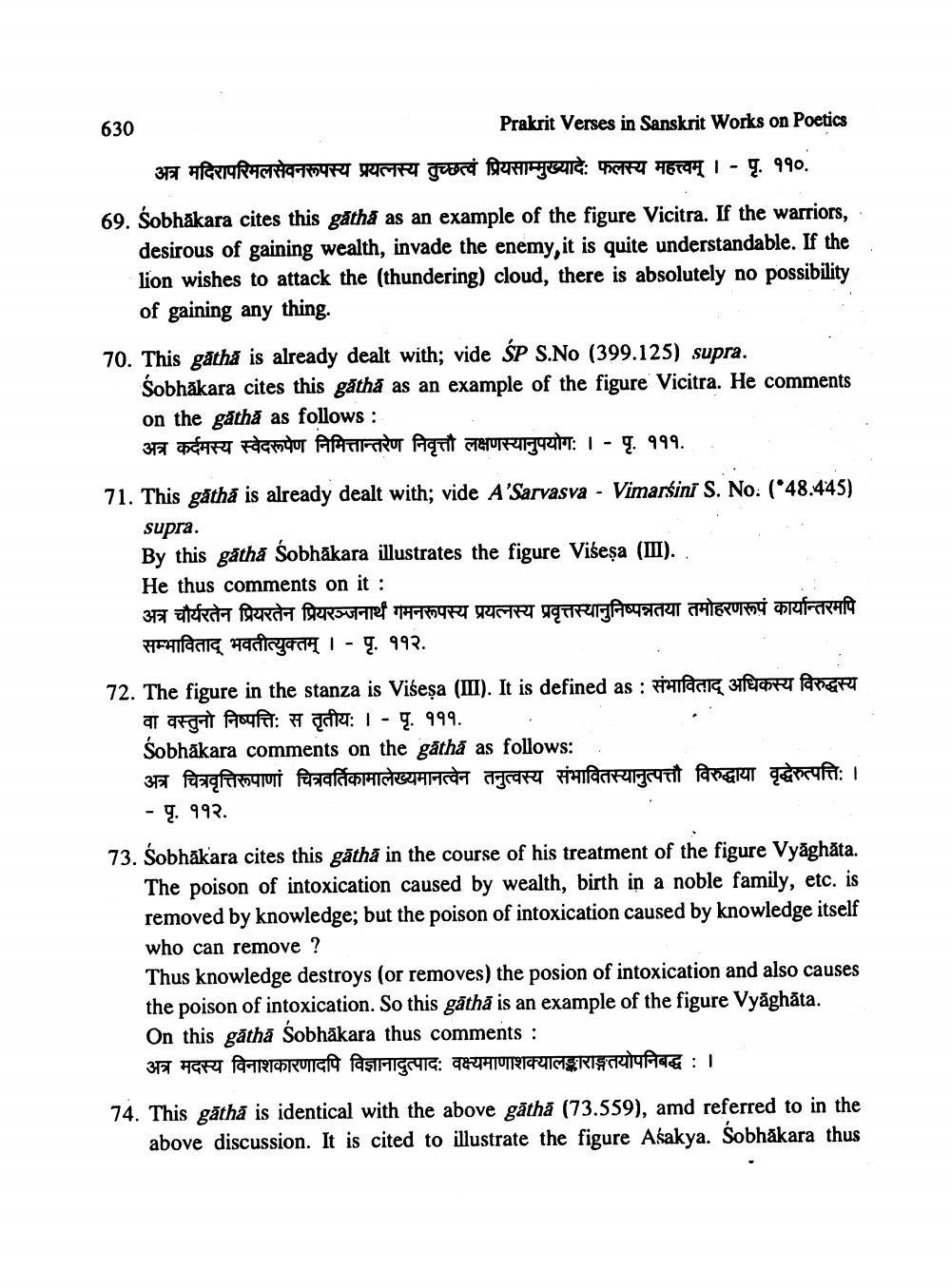________________
630
Prakrit Verses in Sanskrit Works on Poetics अत्र मदिरापरिमलसेवनरूपस्य प्रयत्नस्य तुच्छत्वं प्रियसाम्मुख्यादे: फलस्य महत्त्वम् । - पृ. ११०. 69. Sobhakara cites this gatha as an example of the figure Vicitra. If the warriors,
desirous of gaining wealth, invade the enemy, it is quite understandable. If the lion wishes to attack the (thundering) cloud, there is absolutely no possibility of gaining any thing.
70. This gātha is already dealt with; vide ŚP S.No (399.125) supra.
Sobhākara cites this gātha as an example of the figure Vicitra. He comments on the gåtha as follows:
अत्र कर्दमस्य स्वेदरूपेण निमित्तान्तरेण निवृत्तौ लक्षणस्यानुपयोग: । - पृ. १११. 71. This gātha is already dealt with; vide A'Sarvasva - Vimarsini S. No: (*48.445)
supra. By this gatha Sobhakara illustrates the figure Visesa (III). . He thus comments on it : अत्र चौर्यरतेन प्रियरतेन प्रियरञ्जनार्थं गमनरूपस्य प्रयत्नस्य प्रवृत्तस्यानुनिष्पन्नतया तमोहरणरूपं कार्यान्तरमपि
सम्भाविताद् भवतीत्युक्तम् । - पृ. ११२. 72. The figure in the stanza is Visesa (III). It is defined as : संभाविताद् अधिकस्य विरुद्धस्य
वा वस्तुनो निष्पत्ति: स तृतीय: । - पृ. १११. Sobhākara comments on the gătha as follows: अत्र चित्रवृत्तिरूपाणां चित्रवर्तिकामालेख्यमानत्वेन तनुत्वस्य संभावितस्यानुत्पत्तौ विरुद्धाया वृद्धेरुत्पत्तिः ।
- पृ. ११२. 73. Sobhākara cites this gātha in the course of his treatment of the figure Vyāghăta.
The poison of intoxication caused by wealth, birth in a noble family, etc. is removed by knowledge; but the poison of intoxication caused by knowledge itself who can remove ? Thus knowledge destroys (or removes) the posion of intoxication and also causes the poison of intoxication. So this gātha is an example of the figure Vyāghāta. On this gāthă Sobhākara thus comments : अत्र मदस्य विनाशकारणादपि विज्ञानादुत्पाद: वक्ष्यमाणाशक्यालङ्काराङ्गतयोपनिबद्ध : ।
74. This gātha is identical with the above gātha (73.559), amd referred to in the
above discussion. It is cited to illustrate the figure Asakya. Sobhākara thus




